Abstract
Comparisons between mixed lymphocyte cultures of splenocytes from scrapie-infected and normal mouse brain-inoculated control mice did not reveal any evidence of an impaired cell-mediated immune response in scrapie-infected mice. Likewise, mixed lymphocyte cultures of splenocytes from scrapie-infected and normal mice demonstrated that infected spleen cells had no scrapie-specific antigens on their surfaces. These data suggested that the absence of a detectable scrapie-specific immune response in infected mice was the result of an absence of an exposed scrapie-specific antigen and not due to any direct effect on the immune system.
Full text
PDF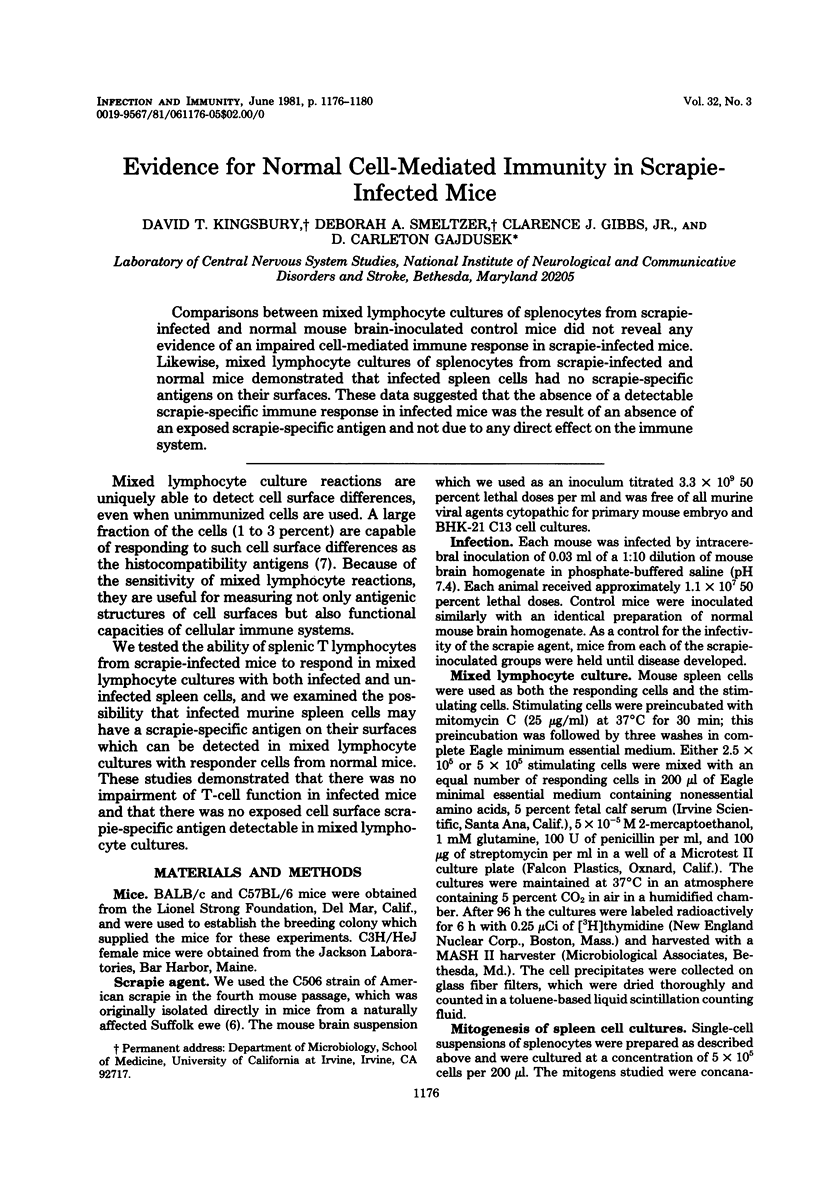
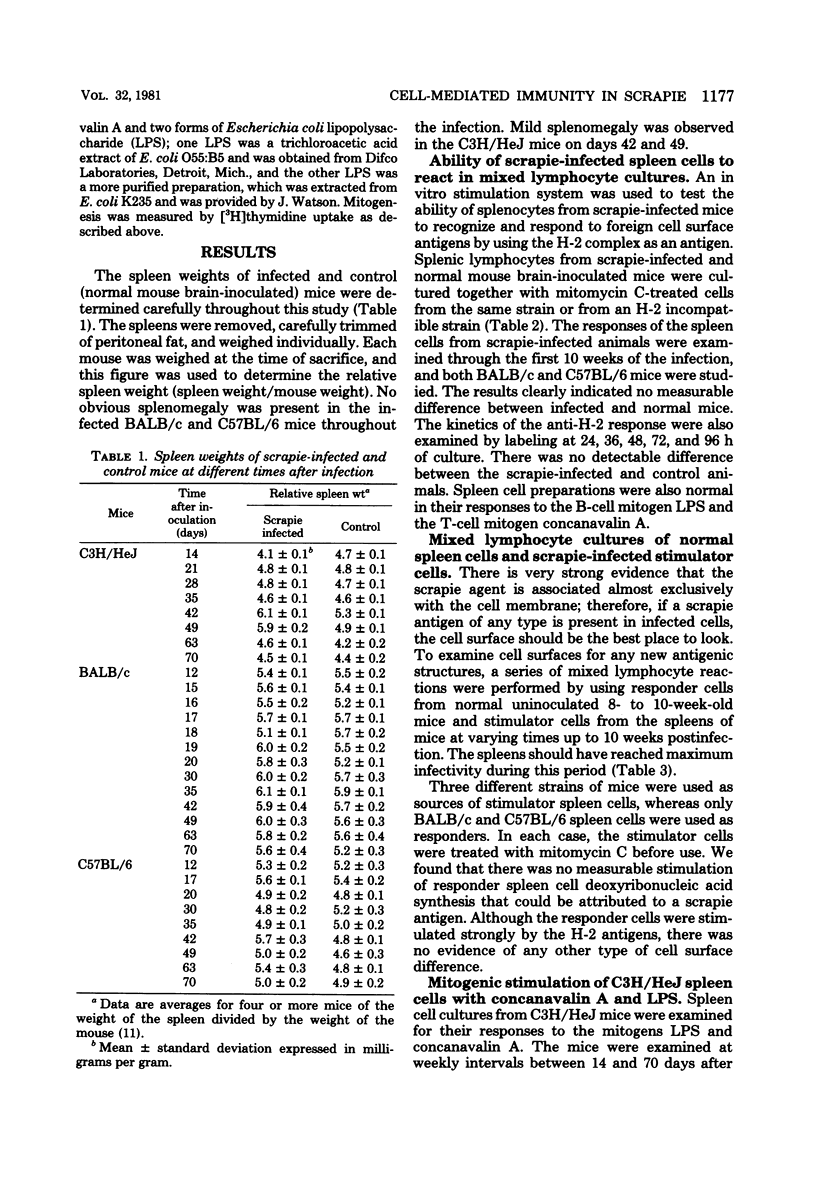
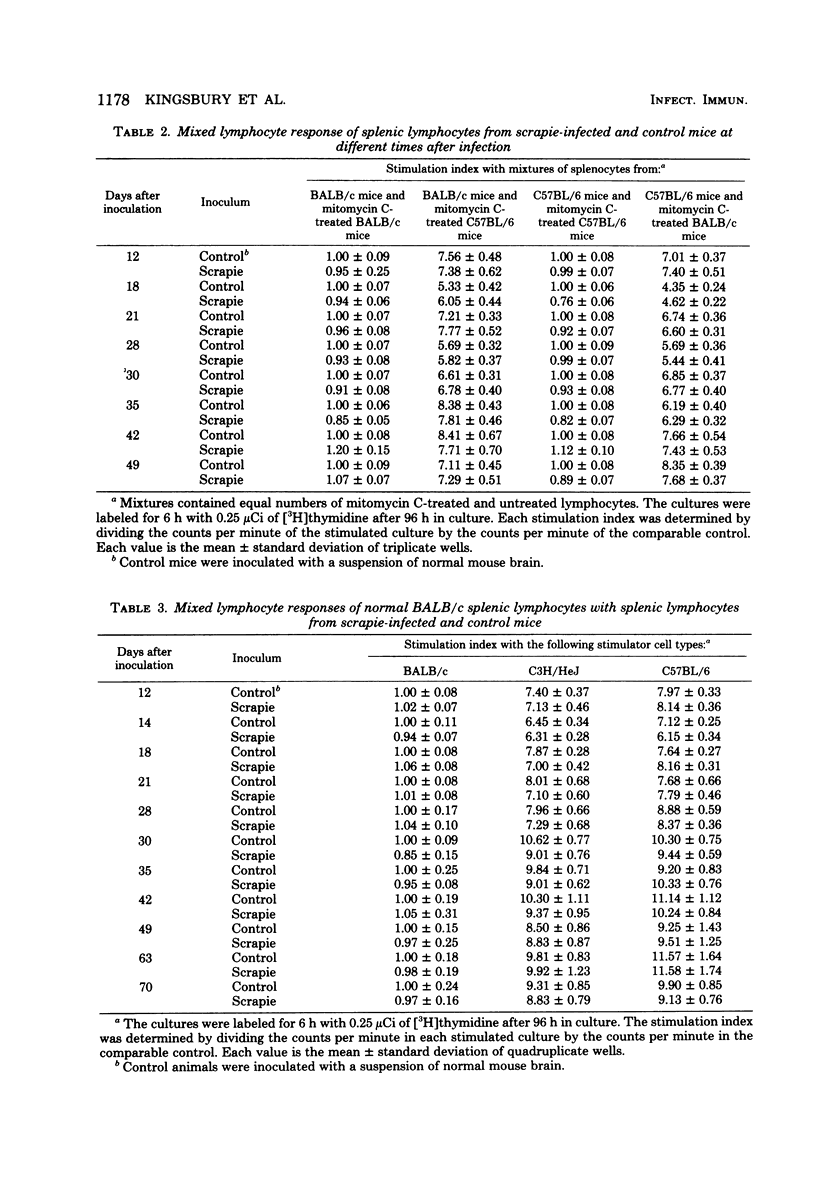
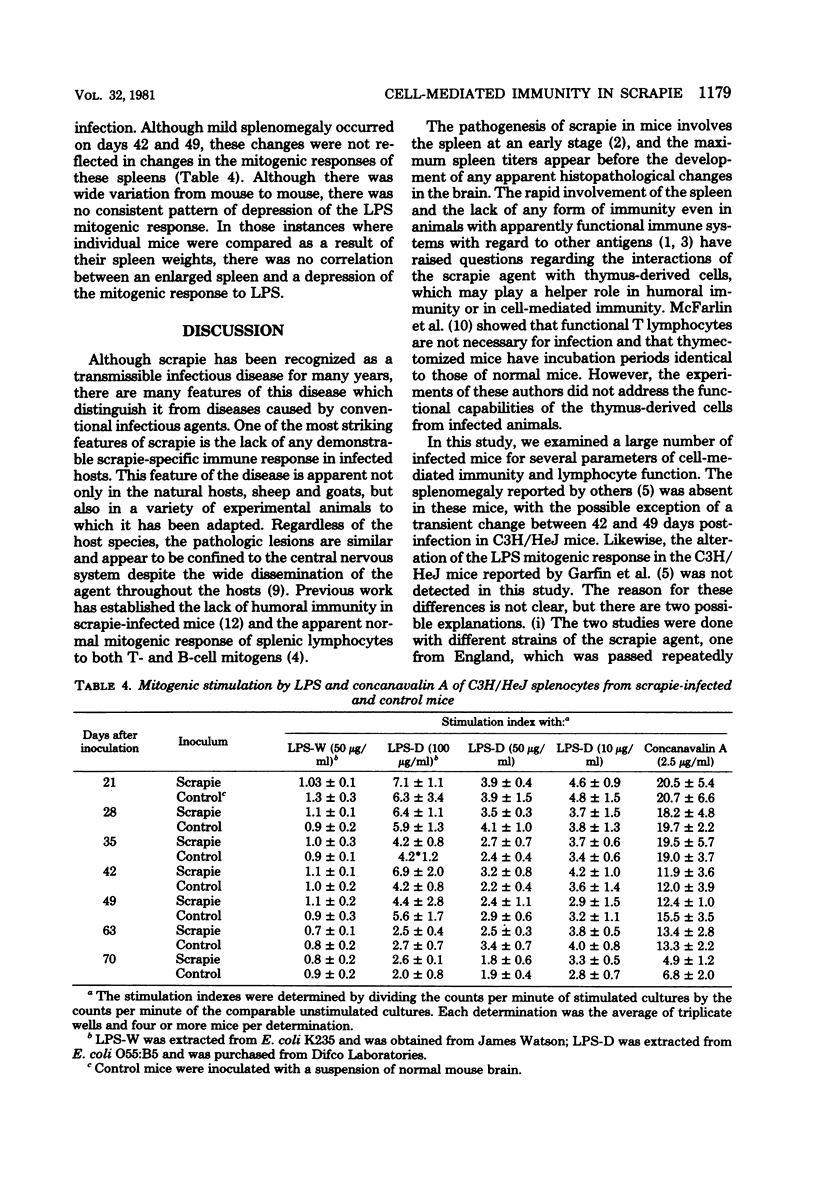
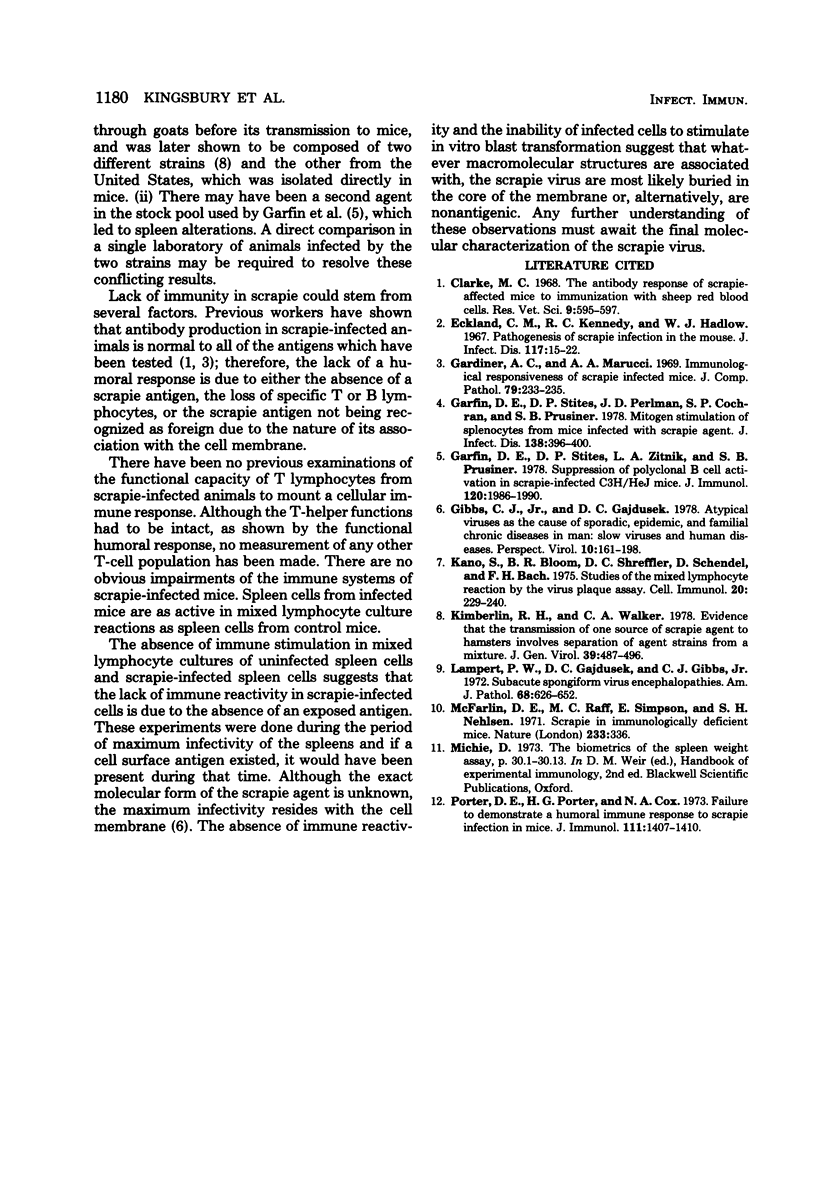
Selected References
These references are in PubMed. This may not be the complete list of references from this article.
- Clarke M. C. The antibody response of scrapie-affected mice to immunisation with sheep red blood cells. Res Vet Sci. 1968 Nov;9(6):595–597. [PubMed] [Google Scholar]
- Eklund C. M., Kennedy R. C., Hadlow W. J. Pathogenesis of scrapie virus infection in the mouse. J Infect Dis. 1967 Feb;117(1):15–22. doi: 10.1093/infdis/117.1.15. [DOI] [PubMed] [Google Scholar]
- Gardiner A. C., Marucci A. A. Immunological responsiveness of scrapie infected mice. J Comp Pathol. 1969 Apr;79(2):233–235. doi: 10.1016/0021-9975(69)90010-3. [DOI] [PubMed] [Google Scholar]
- Garfin D. E., Stites D. P., Perlman J. D., Cochran S. P., Prusiner S. B. Mitogen stimulation of splenocytes from mice infected with scrapie agent. J Infect Dis. 1978 Sep;138(3):396–400. doi: 10.1093/infdis/138.3.396. [DOI] [PubMed] [Google Scholar]
- Garfin D. E., Stites D. P., Zitnik L. A., Prusiner S. B. Suppression of polyclonal B cell activation in scrapie-infected C3H/HeJ mice. J Immunol. 1978 Jun;120(6):1986–1990. [PubMed] [Google Scholar]
- Kano S., Bloom B. R., Shreffler D. C., Schendel D., Bach F. H. Studies of the mixed lymphocyte reaction by the virus plaque assay. Cell Immunol. 1975 Dec;20(2):229–240. doi: 10.1016/0008-8749(75)90100-8. [DOI] [PubMed] [Google Scholar]
- Kimberlin R. H., Walker C. A. Evidence that the transmission of one source of scrapie agent to hamsters involves separation of agent strains from a mixture. J Gen Virol. 1978 Jun;39(3):487–496. doi: 10.1099/0022-1317-39-3-487. [DOI] [PubMed] [Google Scholar]
- Lampert P. W., Gajdusek D. C., Gibbs C. J., Jr Subacute spongiform virus encephalopathies. Scrapie, Kuru and Creutzfeldt-Jakob disease: a review. Am J Pathol. 1972 Sep;68(3):626–652. [PMC free article] [PubMed] [Google Scholar]
- McFarlin D. E., Raff M. C., Simpson E., Nehlsen S. H. Scrapie in immunologically deficient mice. Nature. 1971 Oct 1;233(5318):336–336. doi: 10.1038/233336a0. [DOI] [PubMed] [Google Scholar]
- Porter D. D., Porter H. G., Cox N. A. Failure to demonstrate a humoral immune response to scrapie infection in mice. J Immunol. 1973 Nov;111(5):1407–1410. [PubMed] [Google Scholar]


